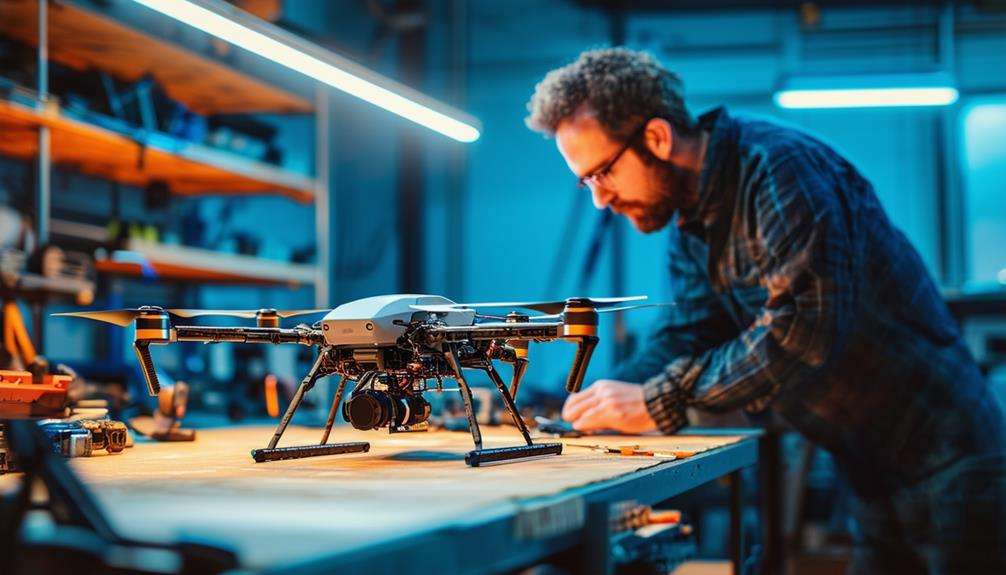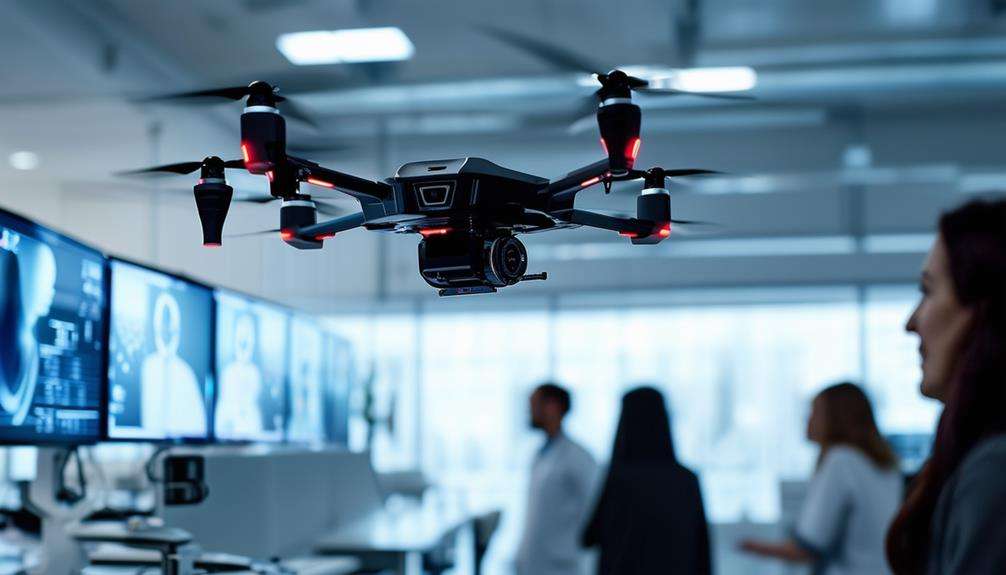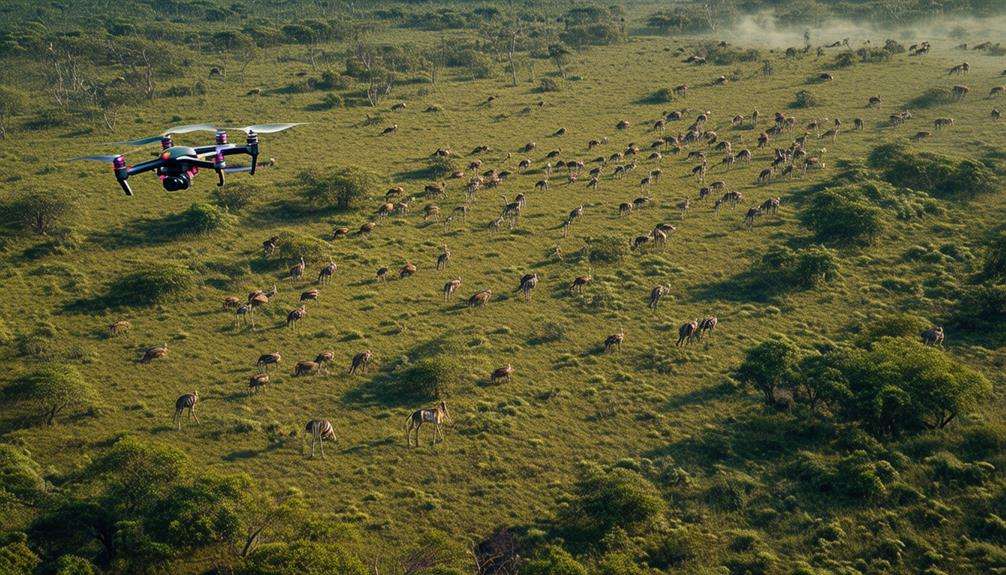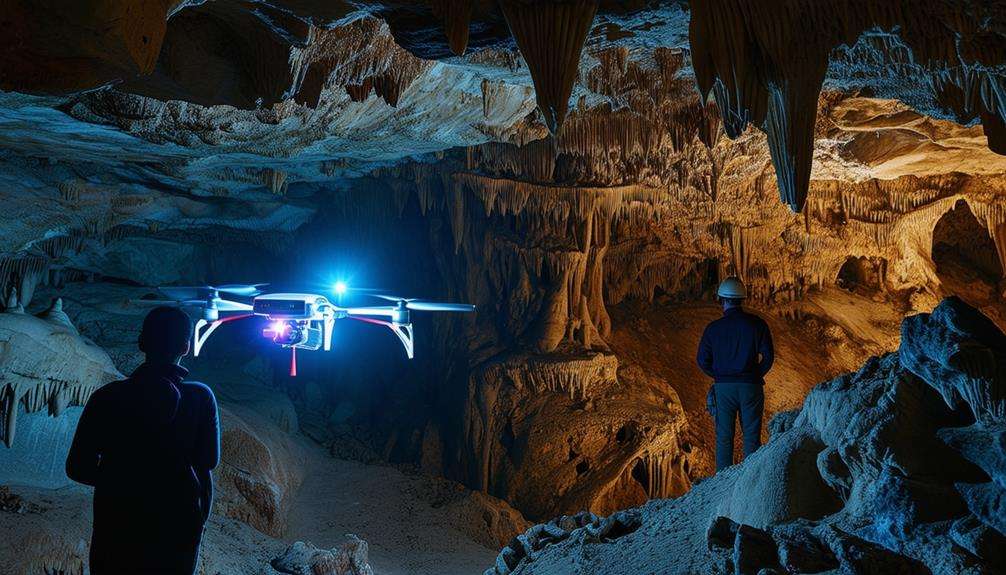The Development of Drone Laws and Regulations
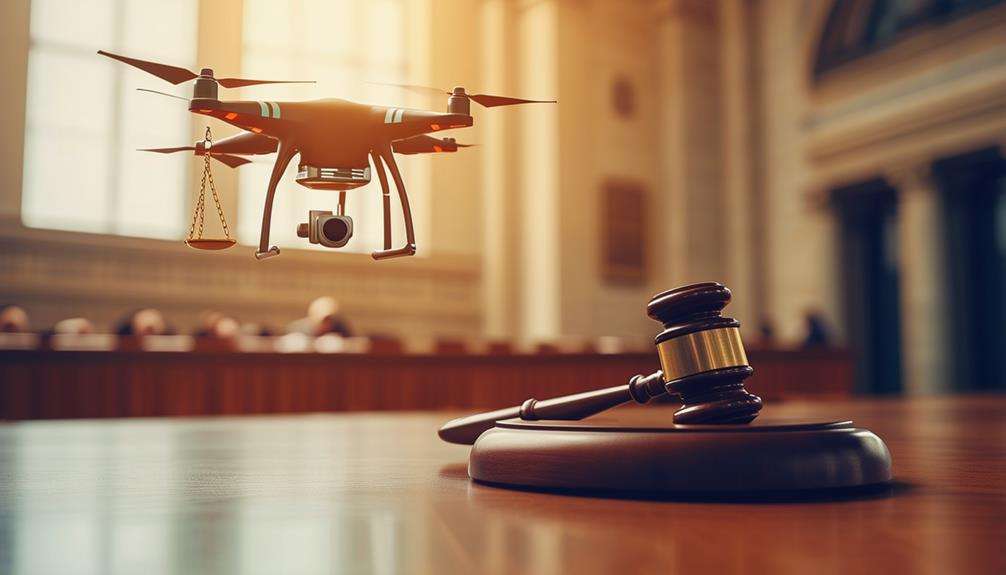
Drone laws have evolved significantly from their inception in early aviation guidelines to today's intricate regulatory frameworks. Initially, regulations focused on basic safety measures and model aircraft. However, the expansion of commercial drone applications necessitated more comprehensive rules.
In 2016, the FAA introduced Part 107, establishing clear standards for commercial drone operations, including parameters like altitude, speed, and visibility. As drones become increasingly integrated into national airspace, emerging technologies such as Remote ID and blockchain are influencing future regulatory landscapes. These changes will have substantial implications for both hobbyists and commercial operators.
Early Aviation Guidelines
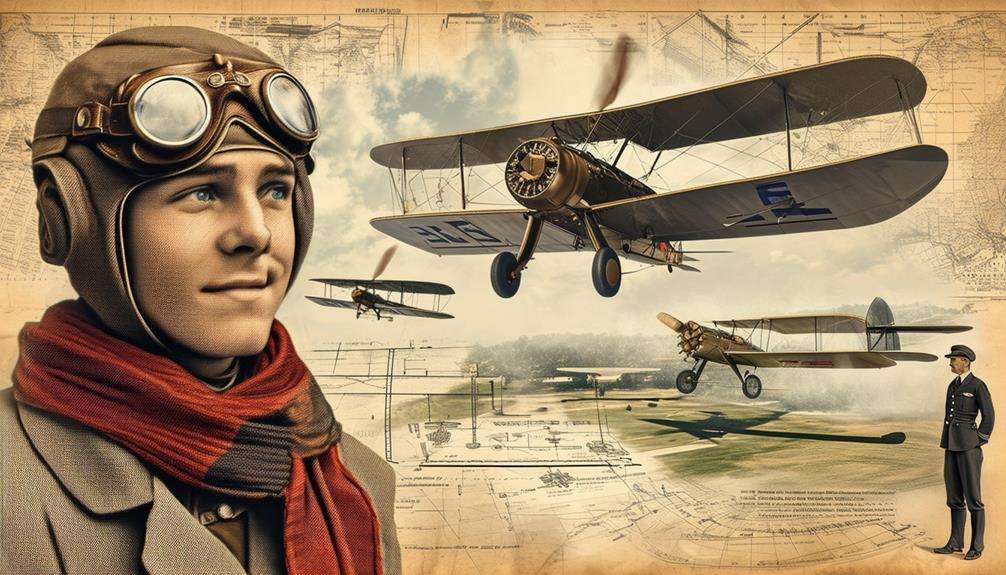
The early aviation guidelines began taking shape in 1936 with the founding of the Academy of Model Aeronautics (AMA), which aimed to promote model airplane flying. The AMA's efforts not only fostered a community of enthusiasts but also laid the groundwork for structured model aviation guidelines. These early rules were essential in setting the stage for future regulations, ensuring safety and standardized practices within the hobby.
Fast forward to 1981, the Federal Aviation Administration (FAA) introduced Advisory Circular AC 91-57, which provided more formalized guidelines for model aviation. This document was pivotal in shaping early drone regulations, as it established basic safety protocols and operational limitations for model aircraft. For hobbyists at the time, these guidelines were invaluable for understanding how to fly model airplanes responsibly.
The significance of these early guidelines can't be overstated. They created a foundation that would later influence the development of more detailed regulations as technology advanced.
Both the AMA's influence and the FAA's advisory circular played critical roles in the conception of early drone regulations, ensuring that the growing community of model aviation enthusiasts had a clear and consistent framework to follow.
The Birth of UAS Regulations
With the basic framework for model aviation in place, regulatory attention shifted towards Unmanned Aircraft Systems (UAS) as their popularity and capabilities grew. Initially, the Academy of Model Aeronautics (AMA) set groundwork for hobbyist flying, but the rise of commercial drone applications demanded more robust guidelines. Recognizing this need, the Federal Aviation Administration (FAA) stepped in to ensure safety and efficiency in the increasingly crowded skies.
In 2012, the FAA Modernization and Reform Act marked a significant milestone by permitting limited commercial drone operations under Section 333 exemptions. These exemptions allowed specific industries to legally utilize drones, with aerial film crews in Los Angeles among the earliest to capitalize on this opportunity in 2014. This move demonstrated the FAA's willingness to adapt to emerging technologies and their applications beyond recreational use.
As demand for commercial drone operations surged, the FAA began developing a more structured regulatory framework. These new rules aimed to strike a balance between promoting innovation and ensuring public safety. By addressing the unique challenges posed by UAS, the FAA laid the groundwork for a future where commercial drones could operate seamlessly across various sectors.
Development of Part 107
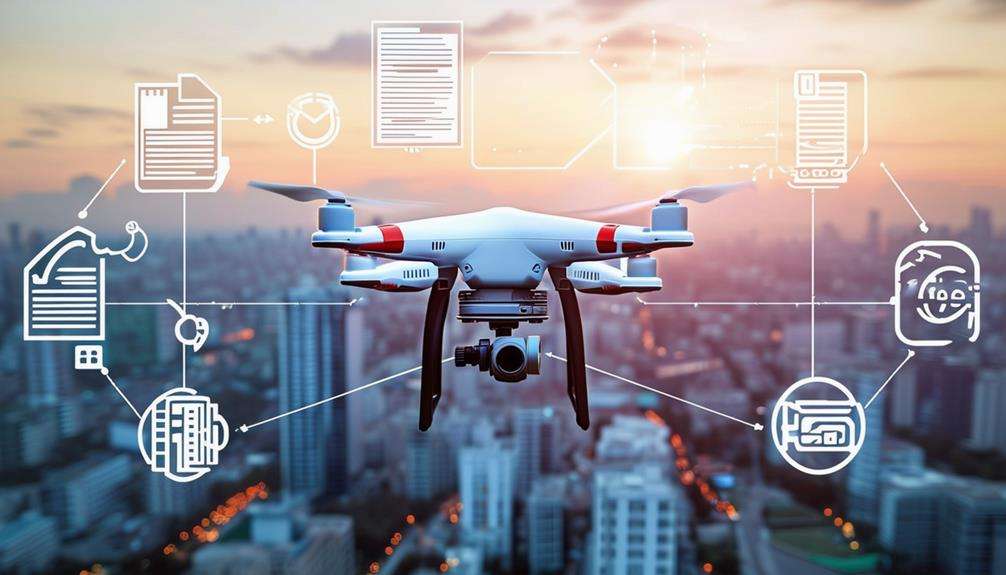
In 2016, the FAA established Part 107 to create a comprehensive regulatory framework for commercial drone operations in the United States. This set of rules marked a significant step in legitimizing and standardizing commercial drone use. Part 107 includes specific guidelines such as altitude limits, speed restrictions, weight constraints, and visibility requirements, all aimed at ensuring safe and efficient drone flights.
To operate drones commercially under Part 107, you must pass the Aeronautical Knowledge Test. This test assesses your understanding of aviation rules and safety measures, emphasizing the importance of aeronautical knowledge in maintaining airspace safety. By passing this test, you demonstrate your qualification to handle the responsibilities of commercial drone operations.
Part 107 also delineates the differences between commercial and recreational drone flights. While recreational users have their own set of guidelines, commercial operators must adhere to stricter regulations to ensure their activities don't interfere with other airspace users. These rules not only standardize qualifications for drone pilots but also formally recognize drones as aircraft within the aviation community, integrating them further into the broader aviation landscape.
Integration Into National Airspace
Integrating drones into national airspace requires the implementation of robust safety protocols and efficient air traffic management systems. It's crucial to ensure that drones operate without disrupting manned aircraft.
Real-time monitoring and communication systems must be explored to manage traffic and maintain safety effectively.
Safety Protocols Implementation
The FAA's safety protocols ensure that drones integrate seamlessly into the National Airspace System. As a UAS pilot, you must adhere to strict guidelines under Part 107 regulations, including specific altitude, speed, and visibility limits to ensure safe operations.
To fly commercially, passing an Airman Knowledge Test is mandatory, demonstrating your comprehension of these safety protocols.
In controlled airspace, proper authorization is required, which can be complex. However, the Low Altitude Authorization and Notification Capability (LAANC) system streamlines this process. LAANC provides real-time approval of flight requests in controlled airspace through a grid-based allocation system.
This allows you to quickly and efficiently obtain the necessary permissions, ensuring your drone operations are compliant with federal regulations and maintaining safety standards.
Air Traffic Management
As drones become increasingly prevalent, their safe integration into the National Airspace System (NAS) depends on robust Air Traffic Management (ATM) solutions. Unmanned Traffic Management (UTM) systems are essential for this integration, facilitating the safe coexistence of drones and manned aircraft. The Federal Aviation Administration (FAA) is actively developing regulations to standardize UTM systems, ensuring that drones can operate efficiently in controlled airspace and beyond visual line of sight (BVLOS).
Advanced UTM technologies will provide the necessary infrastructure to manage drone operations in real-time. This integration is crucial for the future of drone regulations, enabling the growth of advanced drone operations. Collaboration between aviation authorities and industry stakeholders is essential for the successful implementation of UTM systems.
Here are the key aspects of UTM integration:
| Key Aspect | Description | Impact on Drone Operations |
|---|---|---|
| Standardization | Development of unified UTM regulations | Ensures consistency and safety |
| Advanced Technologies | Implementation of real-time tracking systems | Enhances operational efficiency |
| Stakeholder Collaboration | Cooperation among authorities and industry | Facilitates comprehensive solutions |
Commercial Drone Operations
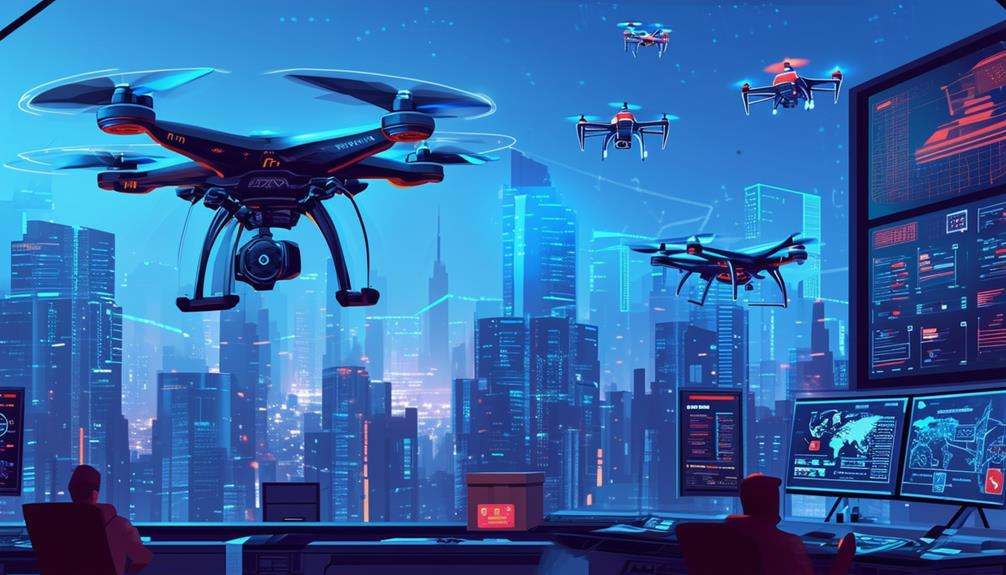
Commercial drone operations experienced substantial advancements with the FAA's introduction of Part 107 in 2016, which established clear guidelines for altitude, speed, weight, and visibility. Under Part 107, commercial drone pilots are required to pass the Airman Knowledge Test, ensuring they understand aviation regulations and can safely integrate with manned aircraft. This certification recognizes them as legitimate members of the aviation community.
Part 107 regulations permit commercial drones to fly up to 400 feet above ground level, at speeds not exceeding 100 miles per hour, and within the operator's line of sight. Additionally, drones must weigh less than 55 pounds. These regulations aim to balance safety and efficiency in commercial drone operations.
In 2017, the FAA introduced the Low-Altitude Authorization and Notification Capability (LAANC) system. This system allows operators to obtain near-real-time authorization for drone flights in controlled airspace, covering over 600 airports. LAANC has streamlined the authorization process, facilitating easier planning and execution of commercial drone missions.
Recreational Drone Use
Shifting focus from commercial to recreational drone use, you must register your drone under the FAA's Recreational Flyers registration system to ensure compliance with FAA regulations. Once registered, mark your drone with the provided registration number.
Before flying, you must pass the TRUST exam, which covers essential safety guidelines and rules for recreational drone use. This straightforward process is mandatory for all recreational drone pilots.
When operating your drone, you can fly at or below 400 feet in uncontrolled airspace without special permissions. However, flying in controlled airspace requires authorization to prevent interference with manned aircraft and other sensitive operations.
Remote Identification Requirements
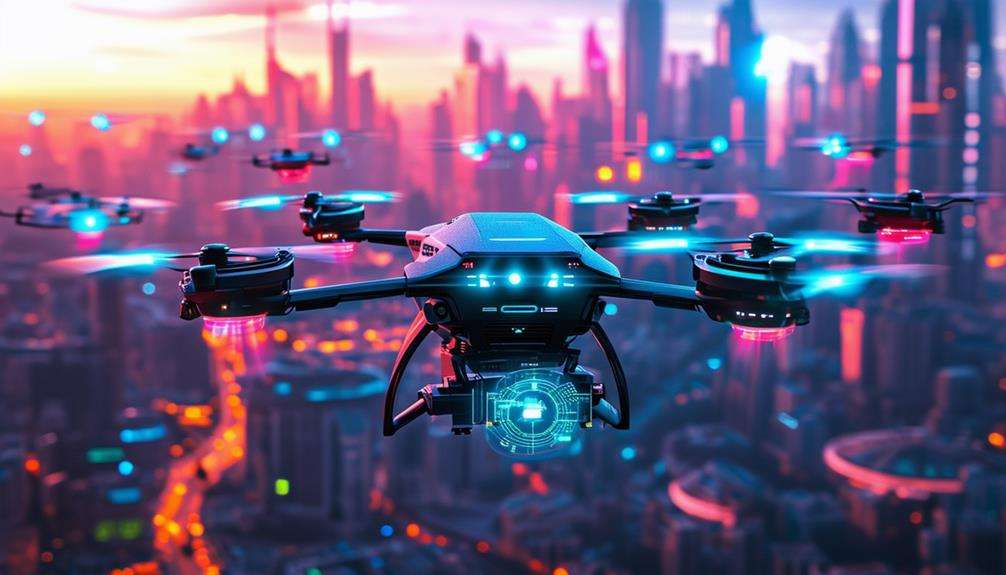
Remote Identification (Remote ID) requirements mandate that drones broadcast identification and location information to improve safety and security. The FAA's Remote ID rule is essential for enhancing these aspects by allowing authorities to track drones in real-time. If you're operating a drone that weighs over 0.55 lbs, you must comply with these requirements by September 16, 2023.
Standard Remote ID broadcasts information directly from the drone itself, providing real-time data to law enforcement and other relevant authorities. Limited Remote ID, however, uses a connected device to relay necessary information, which may be less efficient. Regardless of the method, compliance with Remote ID is mandatory for lawful drone operation.
Drone regulations are evolving, making it crucial to stay updated. By adhering to the FAA's Remote ID requirements, you contribute to the safety and order of the airspace and protect yourself from potential legal repercussions.
Ensuring your drone is compliant with Remote ID standards will make your flying experience more secure and aligned with federal guidelines. Don't wait until the last minute—ensure your drone meets all Remote ID requirements now.
International Standards
International standards for drone regulations are essential for promoting global consistency and safety in drone operations. Leading the initiatives are the European Union Aviation Safety Agency (EASA) and the Federal Aviation Administration (FAA).
These agencies have been instrumental in establishing comprehensive regulatory frameworks that serve as models for other countries. EASA has introduced specific conditions for drone type certificates to ensure airworthiness, while the FAA has implemented stringent criteria for various drone types to enhance safety.
A significant area of focus for these international standards is the regulation of beyond visual line of sight (BVLOS) operations. BVLOS operations are crucial for broadening the scope of drone applications but necessitate rigorous regulatory oversight to ensure safety.
Despite these advancements, many drone operators are still restricted from conducting more advanced operations due to current regulatory constraints.
International collaboration is vital for harmonizing drone laws and certification processes. By working together, countries can develop a unified set of standards, simplifying the regulatory landscape for drone operators and ensuring a higher level of global safety and consistency.
Technological Advances
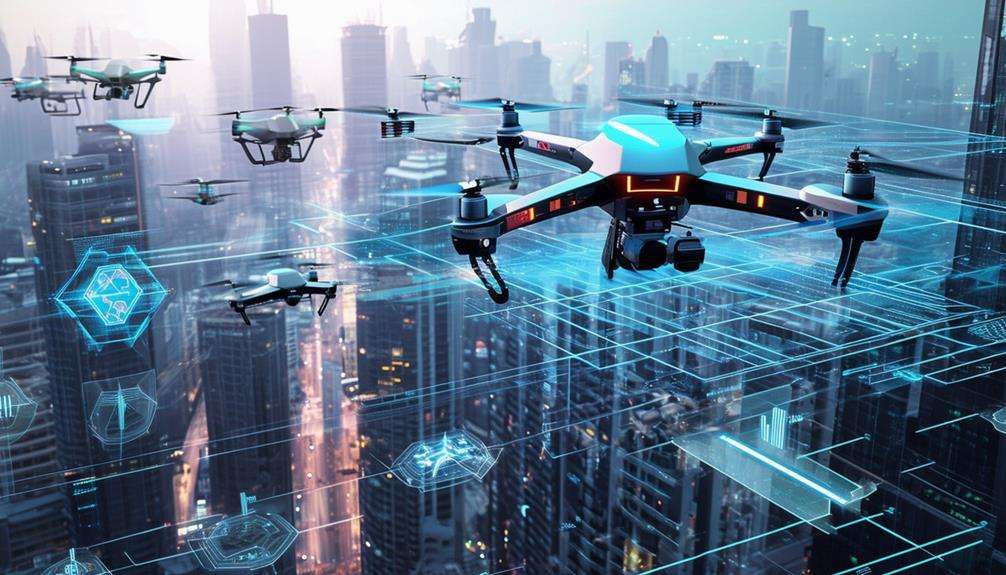
Leveraging international standards, technological advances in drones are propelling the industry with state-of-the-art features such as obstacle avoidance systems and AI integration. These enhancements significantly boost safety and operational efficiency.
Obstacle avoidance systems enable drones to navigate intricate environments by using advanced sensors to detect and avoid obstacles in real-time. This minimizes the risk of collisions, making drone flights safer and more reliable.
AI integration elevates drone autonomy by enabling capabilities such as object recognition and autonomous flight. This leads to more efficient and precise operations, particularly beneficial in sectors like agriculture, where drones can autonomously identify and address crop health issues.
Moreover, battery technology has seen substantial improvements. Modern batteries now offer extended flight times, allowing drones to cover larger areas and undertake longer missions. This is crucial for applications like search and rescue, where prolonged flight durations can be critical.
Here's a synopsis of these technological features:
| Feature | Benefit | Application |
|---|---|---|
| Obstacle Avoidance Systems | Enhanced safety and navigation | Urban deliveries, inspections |
| AI Integration | Autonomous flight, object recognition | Agriculture, surveillance |
| Battery Technology | Prolonged flight times | Search and rescue, mapping |
These advancements underscore the increasing capabilities and reliability of drone technology across various industries.
Future Regulatory Trends
Future regulatory trends will focus on evolving international standards, addressing privacy and security concerns, and adapting to technological advancements. Expect more uniform regulations across countries to simplify cross-border drone operations.
New rules will likely prioritize protecting personal data and ensuring the safe integration of advanced drone technologies.
International Standards Evolution
As drone technology advances, organizations like EASA (European Union Aviation Safety Agency) and FAA (Federal Aviation Administration) are leading efforts to develop robust Beyond Visual Line of Sight (BVLOS) rules and airworthiness standards. These bodies play a crucial role in establishing international standards and regulatory frameworks, ensuring that drones operate safely and efficiently. They're focusing on risk assessment and certification processes to enhance drone operations and improve pilot competency.
Despite these evolving international standards, many drone operators have yet to engage in advanced operations. For those who do, standardized risk assessments and certification processes will be essential. These standards ensure that both drones and pilots meet stringent criteria, promoting safer skies and more reliable drone usage.
Internationally, the Drone Readiness Index (DRI) provides a comparative analysis of national regulatory frameworks. The UK and Australia are recognized leaders, demonstrating proactive rule-making and comprehensive regulatory approaches. Taiwan's emerging regulatory framework also highlights significant progress in the field.
Observing these developments, it's evident that the future of drone regulations will be shaped by international cooperation and standardization. This collaborative approach aims to harmonize protocols across borders, facilitating compliance with varying national requirements and supporting the global growth of the drone industry.
Privacy and Security Concerns
Privacy and security concerns are driving the next wave of drone regulations to ensure responsible data collection while safeguarding individuals' rights. As drones become increasingly prevalent, states have instituted drone-specific privacy laws to address the unique data collection capabilities of commercial drones. These laws often focus on privacy torts and trespass issues, ensuring that drone operators don't infringe on personal privacy or property rights.
The Uniform Law Commission (ULC) and the American Law Institute (ALI) are pivotal in shaping future regulations. They're developing model legislation and Restatements to provide comprehensive guidelines for drone tort liability. These efforts aim to create a consistent legal framework across jurisdictions, making it easier for individuals and organizations to understand and comply with the laws.
Balancing technology, privacy, and property rights is essential for the development of future drone laws that ensure safe and efficient airspace use. By addressing privacy concerns directly, lawmakers aim to foster public trust and enable the drone industry to innovate responsibly.
As these regulations evolve, greater clarity will emerge on how to operate drones without infringing on others' rights, ultimately creating a safer and more secure environment for everyone.
Technological Advancements Impact
Emerging technologies in drones, such as AI integration and advanced sensors, are paving the way for the next wave of regulatory trends. These advancements push the boundaries of what's achievable but also introduce new regulatory challenges.
AI-driven obstacle avoidance systems and advanced navigation sensors are making drones more autonomous, necessitating updated regulatory frameworks to ensure safety and compliance.
Improvements in battery technology enable drones to fly longer distances, increasing the likelihood of crossing into restricted airspaces. This development calls for stricter regulations to manage air traffic and prevent collisions.
The miniaturization of components enhances drone agility, allowing more drones to operate in confined spaces and prompting regulators to consider new guidelines for urban operations.
Drone swarming technology and 5G integration facilitate real-time data transmission, adding complexity to the regulatory landscape. Staying informed about these advancements is crucial, as they'll influence how drones are monitored and controlled.
Additionally, the increasing adoption of blockchain technology for secure drone operations is expected to shape future regulatory standards to ensure data integrity and operational security. These technological strides are redefining the future of drone regulations, making it essential to keep pace with ongoing developments.
Conclusion
Drone laws have evolved from basic aviation guidelines to comprehensive regulations like Part 107.
As drones increasingly integrate into national airspace, advancements such as Remote ID and blockchain technology are establishing new benchmarks for safety and security.
Future developments in international cooperation and technological innovations will continue to shape drone regulations, ensuring that airspace remains safe and accessible for both commercial and recreational users.

